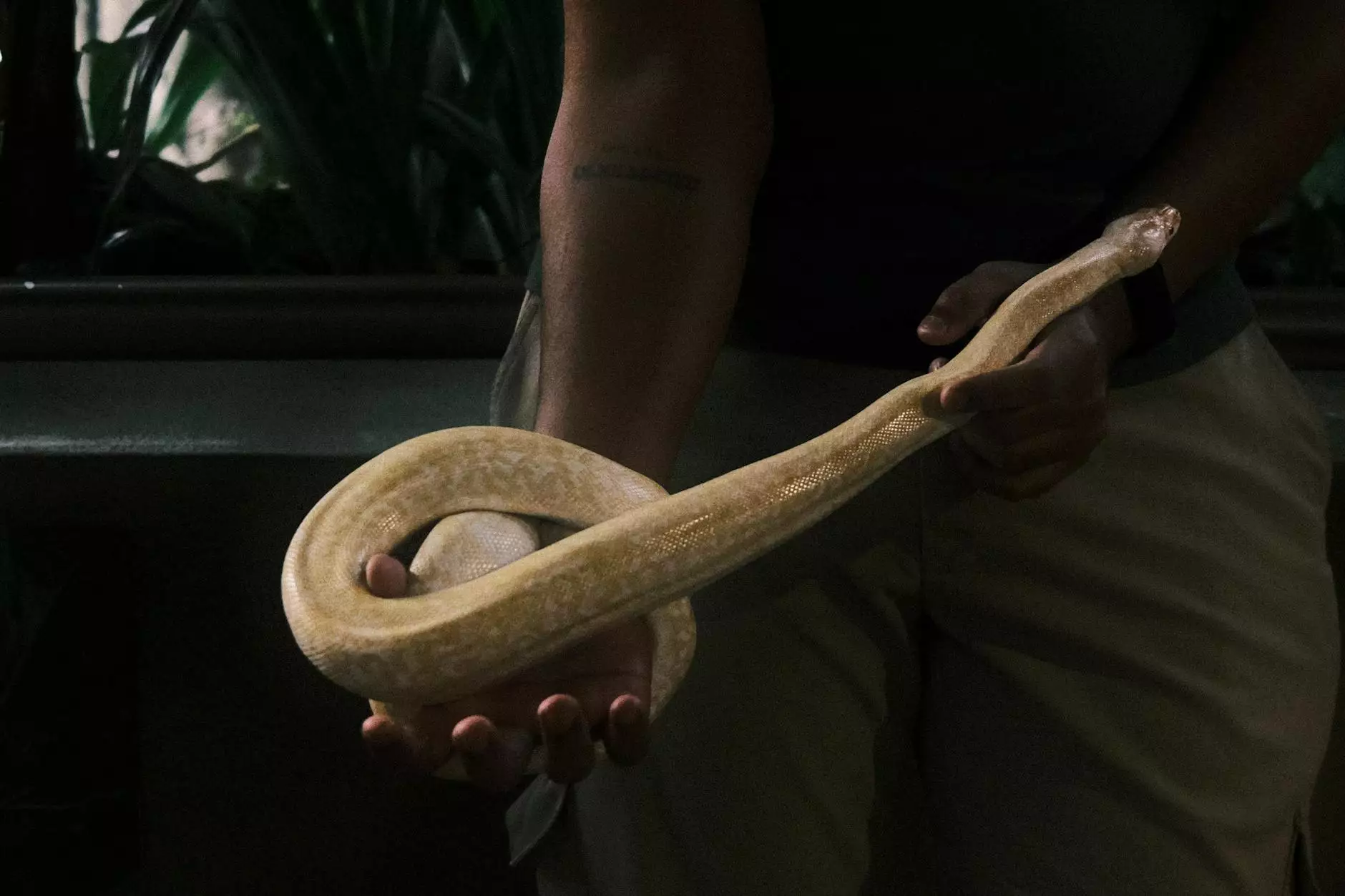Discover the Joy of Owning a Cheap Pet Snake

For many people, snakes evoke images of exotic pets that require extensive care and commitment. However, if you are interested in adopting a snake without breaking the bank, you're in luck! This comprehensive guide will provide you with everything you need to know to find a cheap pet snake that fits your lifestyle and budget.
Understanding the Appeal of Snakes as Pets
Snakes are unique pets that offer a plethora of advantages:
- Low Maintenance: Compared to dogs and cats, snakes require less daily attention.
- Space Efficient: Snakes do not need large play areas, making them perfect for apartment living.
- Allergy-Friendly: Snakes produce no allergens, making them ideal for people with allergies.
- Educational Value: Caring for a snake can be a learning experience about biology and responsibility.
Types of Cheap Pet Snakes to Consider
When seeking a cheap pet snake, it's crucial to choose a breed that suits your experience level and environment. The following are some popular and affordable options:
1. Corn Snakes
Corn snakes are among the most popular pet snakes worldwide. They are known for their gentle temperament and striking colors. Their cost typically ranges from $20 to $100, depending on the morph.
2. Ball Pythons
Ball pythons are ideal for beginners due to their docile nature. Prices can vary widely from $50 to $300, with many affordable morphs available. They have a range of morphs and patterns, making them visually appealing.
3. Garter Snakes
Garter snakes are a great choice for first-time snake owners. Generally priced between $20 and $50, they are hardy and easy to care for.
4. Kingsnakes
Kingsnakes are vibrant and active snakes that can be an exciting option. Their price typically ranges from $30 to $150, making them quite accessible.
5. Hognose Snakes
Hognose snakes are known for their unique appearance and quirky behavior. They usually cost between $50 and $200 and are relatively easy to care for.
Where to Buy Cheap Pet Snakes
Finding a cheap pet snake is easier than you might think. Here are some avenues to explore:
1. Local Pet Stores
Many pet stores carry snakes and often have sales or discounted animals. Be sure to check their reputations and the health of the animals.
2. Reptile Expos
Reptile expos are excellent places to find a variety of snakes. You can often find lower prices and a broader selection than at typical pet stores.
3. Online Retailers
Websites specializing in reptiles can provide options not found in local stores. However, always ensure that you’re buying from reputable breeders, such as those listed on eu-exoticreptiles.com.
4. Pet Adoption Websites
Many snakes and reptiles are available for adoption through animal shelters and rescue organizations. Adopting a snake can be a fulfilling way to find a reptilian companion at a low cost.
Setting Up Your Snake’s Habitat
Once you've chosen a cheap pet snake, providing a suitable habitat is essential for their health and happiness.
Choosing the Right Enclosure
Snakes require enclosures that mimic their natural environment. Here are some considerations:
- Size: Ensure the enclosure is appropriately sized for your snake. A general rule is that the enclosure should be at least two-thirds the snake’s length.
- Material: Options include glass terrariums, plastic bins, and wooden vivariums. Glass is often preferred for visibility.
- Ventilation: Adequate ventilation is essential to prevent mold. Ensure your enclosure has proper air circulation.
Heating and Lighting
Proper heating is crucial for your snake’s metabolism. Most snakes require a basking spot with a temperature range of 85-95°F and a cooler area around 75-80°F. Use heat mats or incandescent bulbs, ensuring that the temperature is monitored with a thermometer.
Substrate and Decor
Choose a suitable substrate for your snake’s enclosure, such as aspen shavings, coconut fiber, or newspaper. Incorporate hiding places like logs, rocks, or commercially available hide boxes to help your snake feel secure.
Feeding Your Snake
Feeding your cheap pet snake properly is crucial. Most pet snakes are fed a diet of rodents. Here’s how to ensure your snake is fed correctly:
1. Understanding Prey Options
Feeding options typically include frozen/thawed or live mice/rats. Frozen prey is strongly recommended for safety and convenience.
2. Feeding Frequency
Young snakes typically eat once every 5-7 days, while adults may only require feeding every 10-14 days. Always consult your snake species' specific needs.
Health and Well-being of Your Pet Snake
Monitoring your snake's health is essential. Here are some signs of good health and common issues to look for:
Signs of a Healthy Snake
- Clear Eyes: Healthy snakes have clear, bright eyes without signs of cloudiness.
- Normal Shedding: Look for good shedding cycles without retained skin.
- Active Behavior: A healthy snake is generally active and curious, especially at dawn and dusk.
Common Health Issues
Be aware of common health problems, including:
- Respiratory Infections: Symptoms include wheezing or bubbles around the nostrils.
- Mites: Tiny parasites that can be seen crawling on the snake's body.
- Obesity: Overfeeding can lead to health issues. Monitor your snake's weight closely.
Conclusion: Your Journey to Finding a Cheap Pet Snake
Choosing to adopt a cheap pet snake can be a rewarding decision for both you and your new reptilian friend. By following the guidelines in this article, you'll be well on your way to becoming a responsible and informed snake owner, providing a comfortable and secure home for your new pet.
Remember to always consider the specific needs of your snake species and to research reputable sources for your future purchases. Whether you visit local pet stores, attend reptile expos, or adopt from shelters, your adventure in snake ownership is bound to be exciting and fulfilling. Enjoy every moment of your journey!









